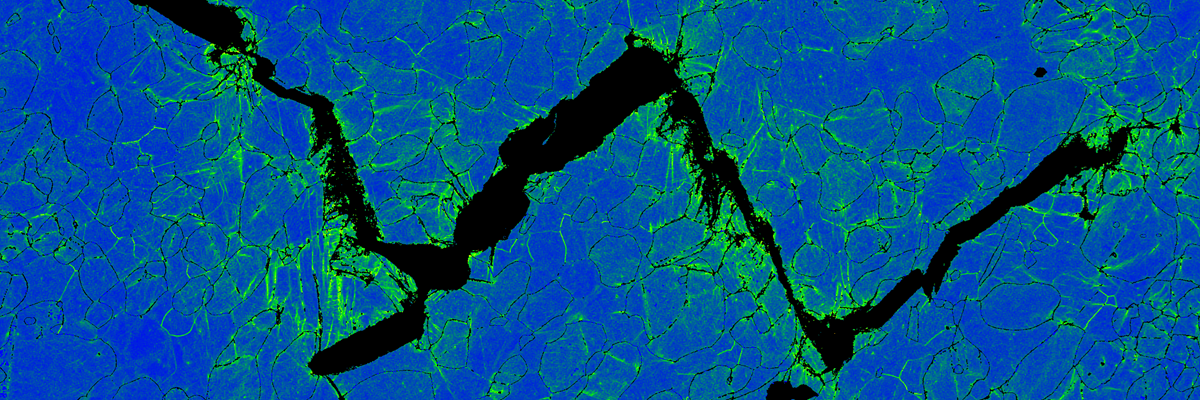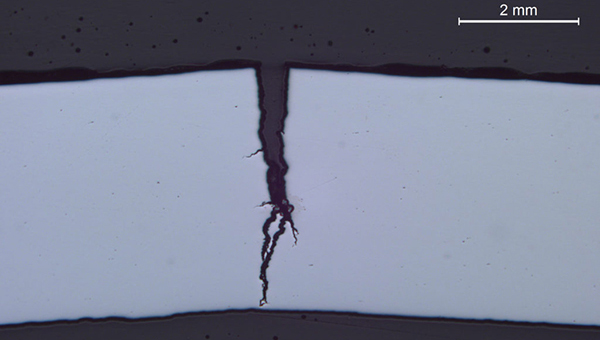Environmentally Assisted Cracking

NACE/ ASTM G193.
Environmental cracking or environmentally assisted cracking (EAC) is the cracking of a material wherein an interaction with its environment is a causative factor in conjunction with tensile stress [author’s note: tensile stresses can be applied and/or residual], often resulting in brittle fracture of an otherwise ductile material. [1]
Example
Figure 1 illustrates a sulfide stress cracking (SSC) fracture of a four-point bend specimen made of UNS G41400 low alloy steel in H2S-satudrated NACE solution.
Figure 1. Environmental cracking of low alloy steel UNS G41400 (AISI 4140) in 50 g/l NaCl + 4 g/l sodium acetate (CH3COONa) saturated with high purity H2S gas at room temperature and atmospheric pressure.
References
-
ASTM G193–12d "Standard Terminology and Acronyms Relating to Corrosion, ASTM International, West Conshohocken, PA, 2003, DOI:10.1520/G0193–12D, www.astm.org.


